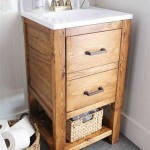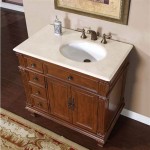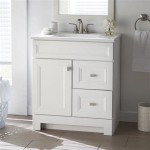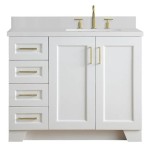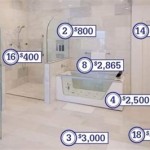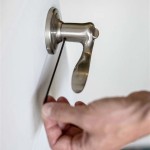How to Hide Pipes in Basement Bathroom
Transforming a basement into a functional bathroom requires addressing the exposed pipes that often mar the aesthetic appeal of the space. Hiding these pipes effectively not only enhances the visual charm but also contributes to a cleaner and more organized feel. This article will guide you through various methods and strategies for concealing pipes in a basement bathroom, each with its own set of advantages and considerations.
Encasing Pipes with Drywall
Drywall is a versatile and economical option for concealing pipes. This method involves constructing a drywall enclosure around the pipes, creating a seamless finish that blends seamlessly with the surrounding walls. This approach is particularly suitable for larger pipe runs or when concealing pipes in corners or along walls.
Before starting, ensure the pipes are accessible for maintenance. Create a framework using wood studs or metal framing material, attaching it securely to the existing wall structure. Install insulation within the framing before adding the drywall to improve sound dampening and enhance energy efficiency. Finish the drywall with joint compound and paint, creating a smooth, integrated surface.
Utilizing Pipe Sleeves
Pipe sleeves, also known as pipe covers, are pre-fabricated coverings specifically designed to conceal pipes. These sleeves come in a variety of materials, including plastic, metal, and wood, offering different aesthetic options to match the bathroom's décor. Pipe sleeves are typically easy to install, requiring minimal tools or expertise.
Measure the pipe length and select sleeves that fit snugly, ensuring proper ventilation and allowing access for maintenance. Some sleeves come with adhesive backing for simpler installation, while others require fastening using screws or clips. Choose sleeves that match the bathroom's color scheme or can be painted to blend with the surroundings.
Integrating Pipes into Built-in Features
For a more integrated approach, consider incorporating the pipes into built-in bathroom fixtures. This method involves designing storage cabinets, vanities, or shelves that strategically enclose the pipes, creating a functional and aesthetically pleasing solution.
This approach requires careful planning and execution. Consult with a contractor or architect to ensure the design is structurally sound and aligns with the bathroom's layout. Ensure the built-in features provide adequate access for maintenance and repairs. Consider using materials that complement the existing bathroom design, creating a unified aesthetic.
Concealing Pipes Using Decorative Elements
If the pipes are located in a visible area, consider utilizing decorative elements to camouflage their presence. This approach involves strategically placing shelves, mirrors, or artwork to draw attention away from the pipes. Choose elements that complement the bathroom's style and integrate seamlessly with the surrounding decor.
Consider using mirrors to create the illusion of depth and reflect light, drawing attention away from the pipes. Place artwork strategically to cover the pipes, making them less noticeable. Utilize shelves to add practical storage and create visual interest, diverting attention from the pipes.
When selecting decorative elements, ensure they are appropriately sized and positioned to effectively conceal the pipes. Opt for visually appealing elements that enhance the bathroom's overall aesthetic.
Addressing Accessibility and Ventilation
When concealing pipes, prioritizing accessibility for maintenance and repairs is crucial. Ensure adequate access to valves, fittings, and other components. Install removable panels or access doors within the enclosures to enable easy inspection and repair.
Ventilation is equally important. Maintain proper air circulation to prevent moisture buildup and potential mold growth. Consider installing vents within the enclosures to ensure adequate ventilation. Consult with a professional to ensure the ventilation system is appropriate for the space and meets local building codes.
Remember to seek professional assistance if you're unsure about any aspect of the process. Consult with a qualified plumber, contractor, or electrician to ensure the work is performed correctly and meets safety standards.

An Interview With A Master Plumber And 3 Creative Ways To Hide Exposed Pipes Nir Plumbing

How Can I Cover These Ugly Water Pipes Without Grinding The Wall Hometalk

Pin On Bathroom

How To Cover Pipes In A Bathroom Dans Le Lakehouse

How To Hide Pipes Behind A Toilet Checkatrade

How To Hide A Sewer Line Pipe Hometalk

7 Creative Ways To Hide Exposed Pipes In Any Room Eyman Plumbing Heating Air

How To Cover Ugly Drain Pipes 3 In Ceiling Of Lower Level Bathroo Hometalk

Pin On Organization Ideas

How To Finish A Basement Bathroom Pex Plumbing
Related Posts
